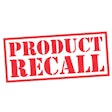
I attended the thought-provoking annual meeting of the Association of American Feed Control Officials in early August. There I learned about the National Animal Supplement Council (NASC) efforts to ensure the safety of animal supplements. I think you'll find them well thought out and interesting.
NASC preferred vendors
The NASC (www.nasc.cc) was concerned that some raw material suppliers were providing false certificates of analysis (CA) for ingredients. The supplements industry had historically relied on a supplier's CA as the sole means of verifying the authenticity of a raw material. Because of the falsification of some CAs, NASC set up a preferred vendor program. It requires raw material vendors to independently verify their CAs. This verification is done by independent labs that NASC specifies. Currently, three labs are used to verify raw material suppliers CAs: Schuster, Eurofins and Analytical Labs. To qualify as an NASC preferred vendor the ingredient supplier must perform the following:
A specific sample from each unique batch or lot must be independently tested by one of the three US laboratories specified.
Independent testing must be completed for each specification on the supplier's CA, which will provide verification.
In addition NASC may require additional testing for potential contaminants at the discretion of NASC.
Each batch or lot of raw material (ingredient) sold to an NASC member must be accompanied by the vendor's CA and the laboratory report.
Early warning system
About four years ago, NASC initiated its customized adverse event reporting system (NAERS) and gave the US Food & Drug Administration access. The current database consists of more than 300 million total administrations of various supplement products for horses, dogs and cats.
"It is cost prohibitive for members and suppliers to conduct safety studies such as those required for drug companies," says Bill Bookout, NASC president. "However, we do understand the need to maintain vigilance for both products and ingredients. Our adverse event reporting system provides members with a comprehensive system to help them properly evaluate adverse events and take corrective action if necessary." Bookout notes NASC is capable of producing a risk report for any ingredient marketed by members.
NASC considers an adverse event a complaint linked to any negative physical effect or health problem that may or may not be associated with the use of an animal supplement. An adverse event includes transient occurrences such as diarrhea or vomiting. Each member company is required to report, investigate and resolve any adverse event monthly.
NAERS has been in place since 2003, but to get a more complete view NASC members are entering historical data as far back as 1995. NASC members are required to enter their adverse events on a monthly basis, or attest there were no events reported. The system tracks adverse events by product/ingredient, as well as the aggregate administrations for 643 ingredients in the marketplace. Bookout tells me that the computer program used in their adverse event reporting system could easily be adapted for the petfood industry. Sounds like an idea worth checking out.



.png?auto=format%2Ccompress&fit=crop&h=167&q=70&w=250)













